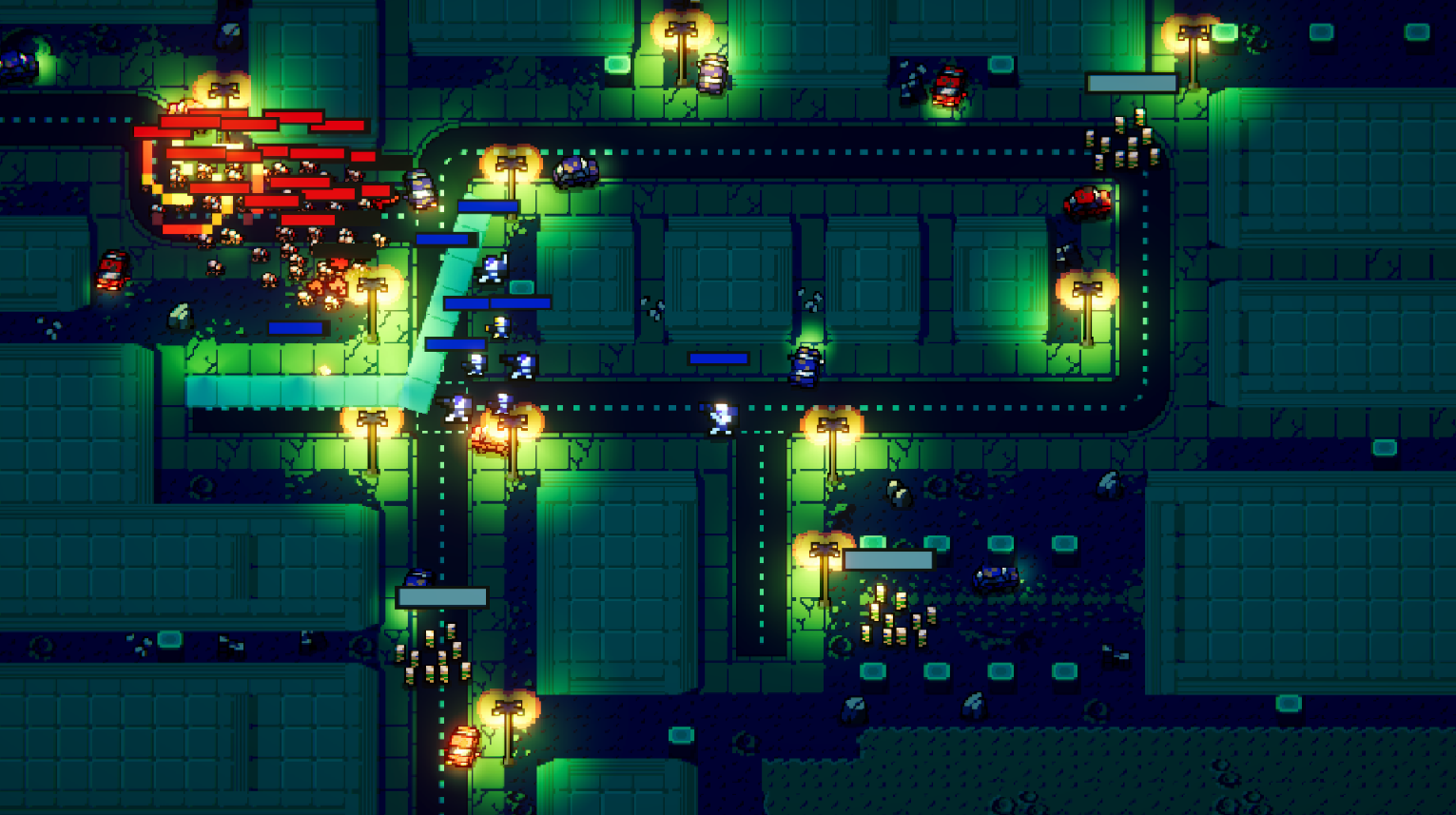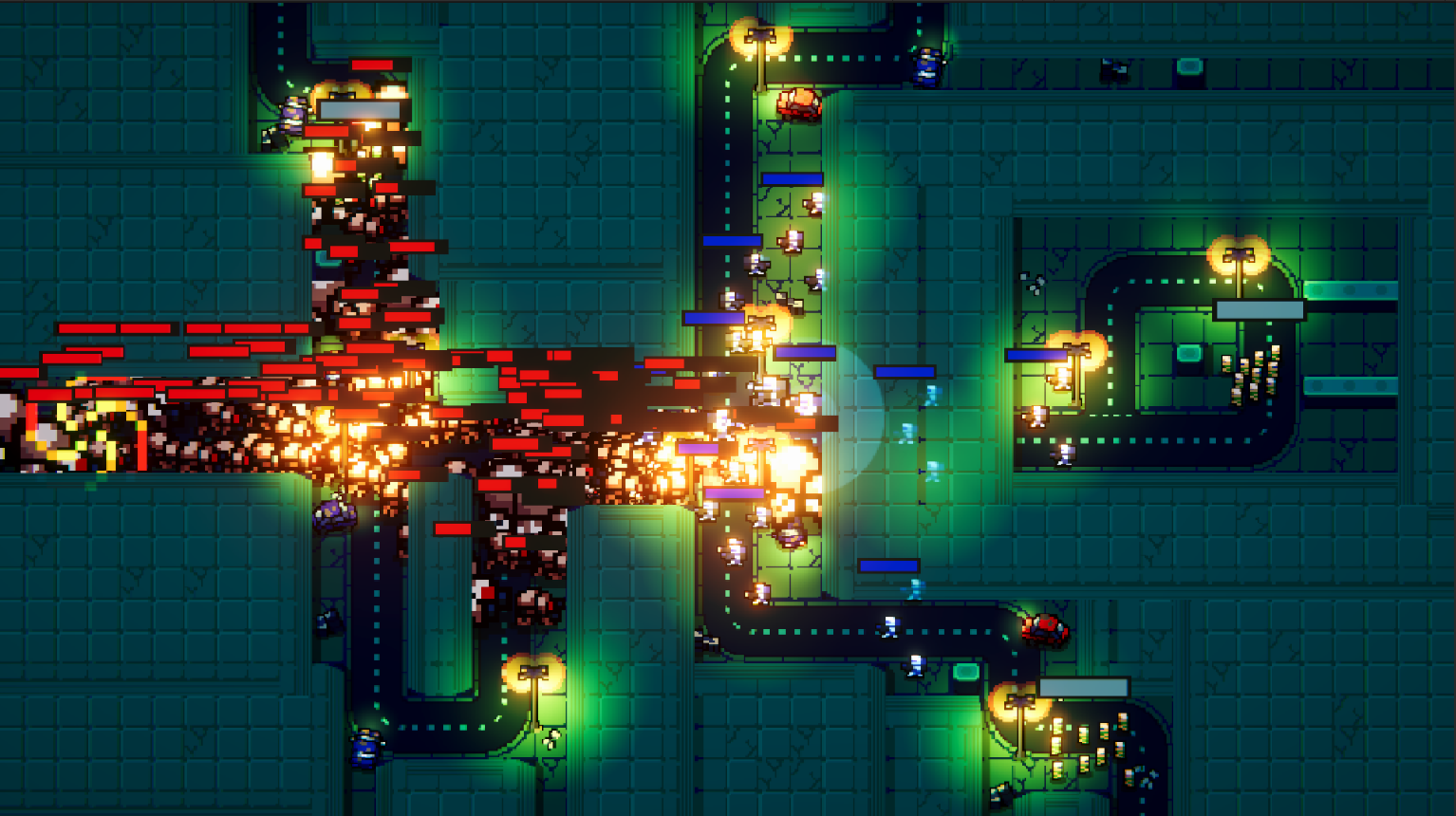
HiveMind
HIVEMIND is a tower defense game I created as a solo developer. I launched it December 2023 on Itch.io.
It is a fast-paced tower defense game about alien bugs invading a small planet.
What I learned
I worked on HIVEMIND for two months. I began development early in November 2023 and launched at the end of December 2023. To complete the project, I taught myself Unity and C#. I was forced to learn, even if only in cursory ways, many different skills, ranging from crafting AI to technical art, such as shaders, to sound design.
In those fields, I learned a tremendous amount. As a growing team member, I have a much better ability to understand the demands and requirements to successfully develop operating systems in these other fields. I am not a master – but I know enough to know how little I know.
But, in reflecting on HIVEMIND, I must focus on the lessons this project taught me regarding narrative design.
This project aimed to focus on something other than crafting a central narrative. Unlike with other projects, such as Tobacco, I wanted to focus on creating player stories over a game narrative. My goal was to design systems to develop a coherent player experience that followed a narrative structure instead of telling the player a story. I was inspired by games like Bloons Tower Defense 6, which has no discernable central narrative but creates meaningful and memorable player experiences that follow a detectable narrative curve.
I think it went… to be entirely honest, very mediocre. In that, it's hard to tell if I exactly hit my goal on this project. Did I successfully create a game that focuses on developing interesting player stories instead of a strong core narrative? To my eyes, an excellent narrative designer has to do both at once. But, as a student, I wanted to try focusing just on the player story.
In terms of HIVEMIND, I somewhat failed. Not that this is a bad game, per se. I don't believe it's terrible, just unfinished and unpolished, but the game doesn't entirely, as effectively as I'd like, craft that emergent story in the player experience. The game failed in that respect. In my eyes, the lack of polish hampers that experience, as well as the lack of content. I do not believe the player has enough decisions to make at any given moment – and those that they do need to make, there isn't enough weight and interest to those decisions to make them meaningful. I also believe that the core premise of the game – the lone central spawning point, using AI, that crafts paths leading towards multiple different goals – was pushed far enough. These are simply ideas I'm developing now, writing this reflection, but perhaps, to improve that player story, I could have done more with the central idea that I simply didn't. Perhaps by creating a stronger sense of identity in the different turrets/enemies, by creating a meta-progression system (such as a player account level up), and by creating more content, such as more turrets, which would have given the player more decisions to make in how they decide they want to play, I could have made a much stronger game.
However, the game was a massive success because it taught me an incredible amount.
I think HIVEMIND taught me to trust myself more. Not in the sense that it… was this massive success that proved to me I have value. Not like that at all. I think it's because Hivemind is, perhaps, a mediocre game – but one that I got done. I taught myself every single thing in that game. I figured out every aspect of making that project – which I'm very proud of.
As a designer, there's a decently fun idea in there. Did it get executed perfectly? No. I can't say that it did. As a designer, it taught me a lot about the flow of mechanics -> behaviors -> emotional responses. It taught me a lot about introducing sound systems for player feedback. It taught me a lot about design in general and my design creation process. For example, I need to start early on with visual tests. A huge roadblock for me while I was working on this project – a roadblock that emotionally burned me out, cut a lot of momentum out of me, and killed a large amount of progress in the game – was the struggle to find a visual style. I don't think I ever exactly saw one. While I had a decent enough idea of the visuals early, I had nothing solid to truly lean on. I got deep into production before the concept of the art style really came back, and by that point, the game had shifted enough that I needed to somehow find a way to jank some art I found online into working for the game. I don't think the game was ugly, but it turned out alright.
A struggle I've had for a long time as a writer and as an artist is not giving the audience member enough information. I know today many artists and creatives argue persuasively that there's too much handholding in art and entertainment. Storytellers give audiences too much information, and paying attention and investing in a piece of art has become meaningless and trivial. The themes and motifs will be explained to you in due time – there's no need to attempt meaningful analysis. Perhaps this is true. However, I've found, in my own writing, that my primary concern is not providing a reader or a player with enough information. As a result, many of my works have felt abstract, removed, and "thin." As if there weren't really anything there. This is an issue I've really fought to try and understand the reason behind.
It's a confidence issue, and it's a vision issue. I learned a lot about the pre-production process with HIVEMIND, and as a result, this game has a meaningful substance. It's not perfect, and by no stretch am I claiming it's a great design, but HIVEMIND has a definite vision behind it – even if not visually, in my eyes, for sure gameplay-wise. There was an intent there. I communicated that intent, and I feel I have made significant strides in improvement. I could go further.
It's a mix of definiteness of vision, which I've often struggled to truly nail with previous projects, paired with a, perhaps scholarly, desire to make "high art." To be taken seriously. I realize now that art shouldn't stand outside the viewer but rather attempt to invite them to know more about themselves. HIVEMIND is a silly little game, but it isn't standoffish. It has substance, and it invites players in. It's the first project I've worked on I can say that about. It's likely on my next project, I'll overshoot, and the pendulum will swing too far in the other direction. That's okay. On the one after that, we'll be much closer to the middle.
I learned a great deal about my pre-production design process and needs. I learned a lot about communicating information to the player through non-verbal means. I learned a lot about the importance of feedback to player/audience member decision-making. I learned a lot about how I personally develop a vision, what it requires to bring that vision about, and how to communicate that vision to others.





